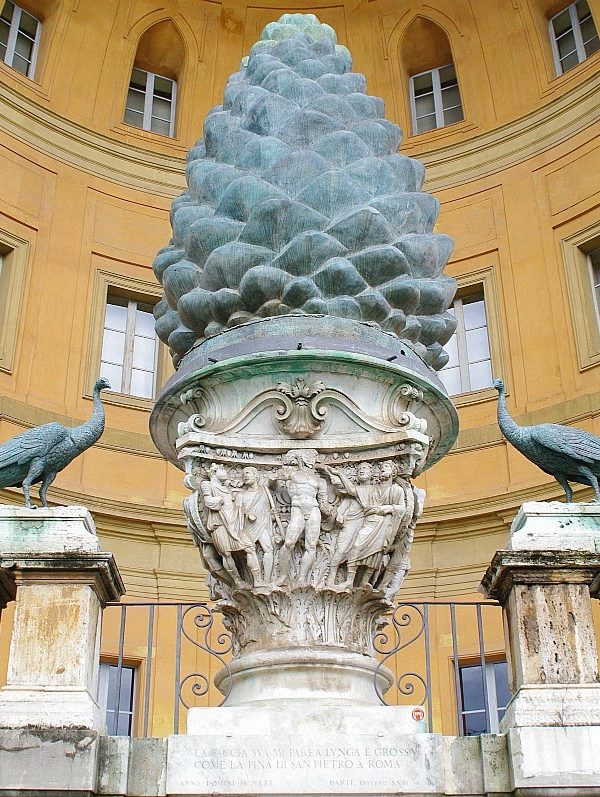The Vatican bronze pinecone is a colossal and ancient bronze sculpture, also called Pignone, which has been in the Vatican for many centuries now. It is currently located in the Cortile della Pigna Courtyard (to which it gives its name) in the complex of the Vatican Museums.
It is a Roman work of the second century, which bears the signature of the sculptor Publio Cincio Savio and is almost four meters high. The colossal statue was originally located, until late antiquity, near the Baths of Agrippa; it probably decorated the nearby Temple of Isis at Campo Marzio, where it was to be part of a fountain by throwing water from the tips. Other scholars speculate that it was placed near the Pantheon. Its presence, however, gave the name to the Pigna district, a place name still in use.
It was used in the early Middle Ages to decorate the center of the four-sided portico of the ancient Constantinian St Peter’s Basilica in the Vatican City. It was placed in the center of a structure called cantharus, surrounded by other sculptures of peacocks and dolphins in gilded bronze. Dante Alighieri probably saw Pignone in this position during a trip to Rome, perhaps for the pilgrimage for the Jubilee of 1300; however, he quoted it in a passage from the Divine Comedy (Inf. XXXI, 59).
“La faccia sua mi parea lunga e grossa
come la pina di San Pietro a Roma,
e a sua proporzione eran l’altre ossa”
In 1608 it was finally placed in the center of the exedra of Bramante’s courtyard, today called, precisely, Cortile della Pigna. La Pigna represents a gigantic pine tree and is located at the top of a double ramp staircase designed by Michelangelo, against the background of the niche. It has as its base a capital with the Coronation of a victorious athlete, a work of the third century from the baths of Nero, and is flanked by two bronze peacocks, copies of the original originals of the Hadrian era preserved in the Braccio Nuovo area of the Vatican Museums.

